One solution is to create a custom calendar for the input year. The dates in the year will be converted to a Period representing weeks that start on Saturday and end on Friday.
import pandas as pd
def week(in_date: pd.Timestamp) -> int:
"""Convert the date to a week according to client calendar."""
# Setup a custom calendar table for the year of input date
in_date_year = str(in_date.year)
_df = pd.DataFrame({'Date':pd.date_range(in_date_year+'-1-1', in_date_year+'-12-31')})
_df['Period'] = _df['Date'].dt.to_period('W-FRI') # define week period that starts on SAT and ends on FRI
_df['Week_Num'] = _df['Period'].dt.week
# Adjust week number for year start
_df['Week_Num'] = np.where(_df['Week_Num'].iloc[0] >= 52, _df['Week_Num'] % 53 + 1, _df['Week_Num'])
# Adjust week number for year end
_df.iloc[-7:, _df.columns.get_loc('Week_Num')] = np.where(_df['Week_Num'].iloc[-7:] < 52, 53, _df['Week_Num'].iloc[-7:])
# Get week number and return
return _df.loc[_df['Date'] == in_date, 'Week_Num'].iat[0]
The week numbers returned for the Period will be set according to weeks that start on SAT and end on FRI. However, for the year start and year end, the week number may still show week number corresponding to the previous/next year. Hence, we checked and adjusted for this year start/end discrepancy accordingly.
Result:
week(pd.Timestamp('2022-01-01'))
#output
1
week(pd.Timestamp('2022-12-31'))
#output
53
The underlying table is built as follows:
For year 2022:
# print first 10 rows of the year
print(_df.head(10))
Date Period Week_Num
0 2022-01-01 2022-01-01/2022-01-07 1
1 2022-01-02 2022-01-01/2022-01-07 1
2 2022-01-03 2022-01-01/2022-01-07 1
3 2022-01-04 2022-01-01/2022-01-07 1
4 2022-01-05 2022-01-01/2022-01-07 1
5 2022-01-06 2022-01-01/2022-01-07 1
6 2022-01-07 2022-01-01/2022-01-07 1
7 2022-01-08 2022-01-08/2022-01-14 2
8 2022-01-09 2022-01-08/2022-01-14 2
9 2022-01-10 2022-01-08/2022-01-14 2
# print last 10 rows of the year
print(_df.tail(10))
Date Period Week_Num
355 2022-12-22 2022-12-17/2022-12-23 51
356 2022-12-23 2022-12-17/2022-12-23 51
357 2022-12-24 2022-12-24/2022-12-30 52
358 2022-12-25 2022-12-24/2022-12-30 52
359 2022-12-26 2022-12-24/2022-12-30 52
360 2022-12-27 2022-12-24/2022-12-30 52
361 2022-12-28 2022-12-24/2022-12-30 52
362 2022-12-29 2022-12-24/2022-12-30 52
363 2022-12-30 2022-12-24/2022-12-30 52
364 2022-12-31 2022-12-31/2023-01-06 53
For year 2025:
# print first 10 rows of the year
print(_df.head(10))
Date Period Week_Num
0 2025-01-01 2024-12-28/2025-01-03 1
1 2025-01-02 2024-12-28/2025-01-03 1
2 2025-01-03 2024-12-28/2025-01-03 1
3 2025-01-04 2025-01-04/2025-01-10 2
4 2025-01-05 2025-01-04/2025-01-10 2
5 2025-01-06 2025-01-04/2025-01-10 2
6 2025-01-07 2025-01-04/2025-01-10 2
7 2025-01-08 2025-01-04/2025-01-10 2
8 2025-01-09 2025-01-04/2025-01-10 2
9 2025-01-10 2025-01-04/2025-01-10 2
# print last 10 rows of the year
print(_df.tail(10))
Date Period Week_Num
355 2025-12-22 2025-12-20/2025-12-26 52
356 2025-12-23 2025-12-20/2025-12-26 52
357 2025-12-24 2025-12-20/2025-12-26 52
358 2025-12-25 2025-12-20/2025-12-26 52
359 2025-12-26 2025-12-20/2025-12-26 52
360 2025-12-27 2025-12-27/2026-01-02 53
361 2025-12-28 2025-12-27/2026-01-02 53
362 2025-12-29 2025-12-27/2026-01-02 53
363 2025-12-30 2025-12-27/2026-01-02 53
364 2025-12-31 2025-12-27/2026-01-02 53

